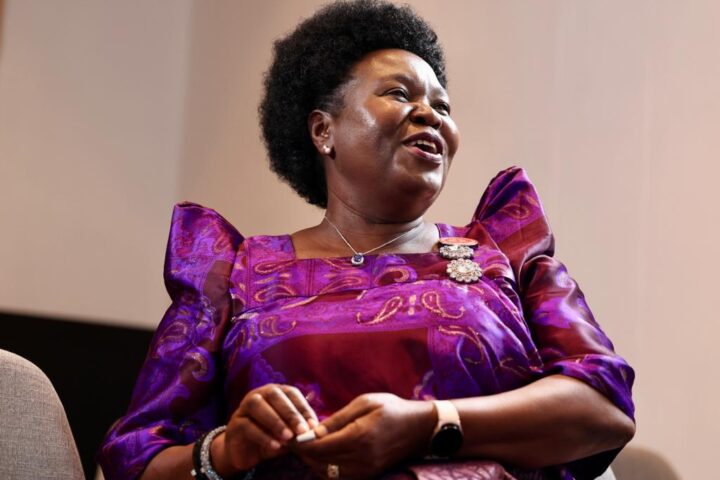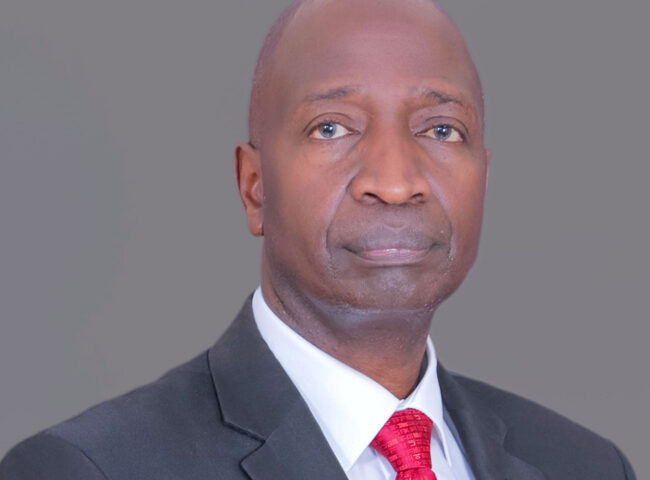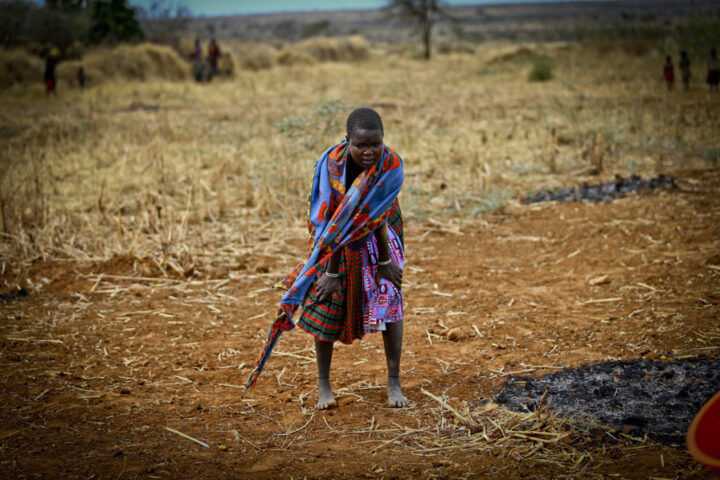The praise and worship choir singing fortunes “Made in Africa” has been hushed by the retreating march of lower oil prices. Leading companies like Tullow oil, a shining talisman of the possibilities of oil riches on the continent’s undiscovered potential, have seen their share value fall by nearly half. For freshmen into the club of the soon-to-be-wealthy from oil like Uganda, the tumbling prices are a bad omen.
From Angola to Equatorial Guinea, Sudan to Gabon falling oil prices are being included in revised footnotes of next year’s Africa rising papers and memos. Take Nigeria, its fufu is toast. The size of the economy of Africa’s most populous nation has long been fired by oil prices above $80 per barrel. Afro-pessimists and optimists alike are shaking their gourds and beads pondering what this oil price voodoo means for the rest of the continent.
Uganda is one of the first countries to herald the new optimism of oil where the resource was recently discovered and where Tullow made its name and fortune. It has rebased its economy.
So is it all bad news? Maybe not.
In East Africa big projects benchmarked on investments in oil, gas or minerals will only suffer serious damage with the hemorrhaging of government-backed Chinese money. Its these sovereign wealth funds dispensed by the Export-Import Bank of China that have breathed life into the comatose body of the East African community [EAC], the regional economic grouping. Its leaders are speaking like Nkurumah awakened- about a common market with roads, railways, dams and jobs- for Africans paid for by China.
It is entirely too early to say if the dry season of low oil prices will cause China to modify its engagement with the EAC where it is a dominant player. Like in Nigeria where Chinese companies are building Africa’s longest railway, East Africa will see a similar project – linking Rwanda to the Kenyan coast via Uganda, a throwback to the “Lunatic Express” of the colonial era, when Britain constructed one, but now with less Indians or lions on the route.
Instead the new railway will thunder past national parks like Murchison Falls where oil discoveries have been made laying bare the new geography of mineral and agricultural lands that have recalled the commodity fever of the 60’s and 70s.
Regardless of oil price volatility investment here will likely continue to flow as long as regional governments continue to chase large projects reducing risks for investors while improving the prospects for their economies outside the extractives sector.
Seen this way oil price volatility is a short-term factor that like a high fever may test the corpus of the government enterprise at the heart of some of the most ambitious projects the region has ever seen; enough to turn Kwame Nkurumah in his grave.
But delays are to be expected. Especially on projects like the fantastic LAPSSET or Lamu Port Southern-Sudan-Ethiopia Transport project or the Standard Gauge railway itself.
Low oil prices may simply contribute a slower pace to the new scramble.
Too big to fail?
A number of EAC projects like the Northern Corridor infrastructure projects will delay for reasons that are traditional. Agenesis here is a factor of politics, public sector corruption and red tape. Consider Uganda’s largest hydropower project, the Karuma Dam. Its funding has been complicated by a combination of procurement related corruption, on an astonishing scale, political meddling by increasingly powerful regime-connected middlemen and paralysis of the civil service as a result.
Work on the dam is proceeding at an underwhelming pace after the Central Bank was asked to step in to provide start-up capital following delays of funding by China’s Exim Bank. Several sources suggest that changes at the Bank, following President Xi Jinping’s “anti-corruption” crusade had turned Exim into “another World Bank”. In any event an apparently rigorous post-award review of the project by Chinese officials led to several “unforeseen” delays that will translate into many missed deadlines for the prize project of the Ugandan government.
China’s behavior here suggests that the notion of a blank check from Beijing is a myth. The walalala by Ugandan politicians like others on the continent about China being the magic ginseng for all problems that Europeans have been reluctant to fix may be less loud as other Chinese backed multi-billion projects come under similar project parameters as any other projects. No freer lunches.
The greed of Chinese companies that is fueling the rentier episode of Sino-Ugandan relations ultimately has to come to terms with cost and profitability after the ribbon-cutting and political kickbacks are done. Ugandan President himself complained that one of his minister’s, [understood to be one of the energy ministers]demanded a10% bribe for the Karuma project, or $200 million.
This logic, of postpartum project trauma, can be applied to the other so-called Northern Corridor infrastructure projects like the railway, whose overpricing on its Ugandan leg is epic by any standard. Procurement wars and squabbling over this project – linked to policy of the ruling NRM government to outsource major public works to the military, are still going on. One of the ministers caught up in the imbroglio while handing us his business card claimed Uganda was so corrupt that Judges were auctioning decisions and journalists went to the highest bidder. This was at the Uganda Golf course, an institution set up in 1908 before the British railway reached Uganda’s borders, where we had earlier observed a former military officer turned politician casually handing over stacks of dollars to Members of Parliament for services undisclosed.
Once again Chinese firms competing for the railway, since reigned in by the local Chinese Embassy, led with an apparent strategy of building pork into the railway project for political elites in the hope that the sovereign nature of the project will ensure its completion no matter the mess. Kenya and Tanzania have similar syndicated corruption theatre depicting the deadline corroding effect of broad daylight “theft” of public funds under the guise of new progress with China.
Consider the joint crude-export pipeline committed to by Uganda, Rwanda and Kenya. A pre-qualified list of companies, aside from two (Punj Lloyd of India and Italian subsidiary of Eni; Saipem) is mostly Chinese companies.
Here is the full list.
· Zakhem International Construction Ltd and Jiangsu Yulong Steel Pipeline Corporation,
· China Petroleum Pipelines Bureau
· China Wu Yi Co with Xinjiang Petroleum Engineering Construction Co/ China Petroleum Engineering Co. Ltd
· China Petroleum Technology and Development Corporation and Tianjin Dagang Oil Field Group
· Punj Lloyd
· Sinopec International Petroleum Service Corporation
· China Petroleum Engineering and Construction Corporation
· Saipem S.P.A
The shortlist was mainly contributed by the Kenyan side of the Joint Coordinating Commission or JCC, which also led the award to Toyota Tsusho of the pipeline design. Ugandan officials argue that Chinese companies “blacklisted” by the World Bank and other international lending agencies are exempt from such scrutiny for the simple reason that their funding is not from the Bretton Woods club.
Kenya’s big $24 billion LAPSSET, seen as Africa’s most ambitious too is attracting interest from mainly China. As low oil prices provide pause some of these major projects will slog on for the near future as the symbiosis of self interested local political elites and essentially Chinese dollars speculate on a rosier picture – while engaging in the old game of scratch your back and I scratch yours.
Never too late
Some projects like Uganda’s proposed oil refinery [in our view] can be pursued even if they are not as profitable in the short run because, in this case, they open the door to other industries while replacing imported fuel with local alternatives. In August 2014 the estimate of recoverable crude was revised upwards from 3.5 billion [STOIP- Stock Tank in Place or estimated reserves prior to recovery] to 6.5 billion barrels from Uganda’s highly successful first round of exploration.
This is good news for the oil companies that had earlier agreed to a commercialization plan that combined the government’s interest in a medium sized refinery with a crude export pipeline. Both projects are running behind schedule. The refinery investor was expected to be announced at the end of November but will now have to await the first half of 2015. The export pipeline is at an early design stage by Japan’s Toyota Tsusho Corporation. In April 2013, and before the oil companies and the Ugandan government put pen to paper on their commercialization plan, Toyota Tsusho submitted an initial feasibility study that pointed out that with increased reserves, its own recommendation for a cheaper pipeline route could remain profitable combined with a domestic refinery.
Some adjustments may well be necessary.
The profitability of the Ugandan refinery is calculated on the basis of oil purchased between $60- $80 per barrel according to the government commissioned report done by Foster-Wheeler. Oil prices have since plunged below $80 but the economic effects of cheaper fuel and downstream industries were not fully factored into any of the two studies most cited [Foster-Wheeler study on the refinery and the Toyota Tsusho Pipeline study].
Chatham House analyst Valerie Marcel, whose expertise is in national oil companies, in an email exchange with us, suggests that in approaching the tide of low oil prices one should keep in mind that in fact the prices are “not that low”.
“The increased drilling activity in the US shale plays, which were thought to be high cost, shows a certain resilience to the lower price. The problem for a producer such as Uganda is that its reserves are not huge and the infrastructure isn’t there. So that increases costs for the oil companies,” she says. She also adds “competition among potential East African exporters is harming their prospects. They should better integrate their downstream and midstream architecture. Developing the infrastructure for a regional market is key to attract future upstream development and increasing energy security in Africa”.
This appears to be the direction for the pipeline and the refinery, the economics of both as we said earlier should be sensitive to the combined wider East African market and its prospects outside the extractives sector. The proposals in the 2013 Toyota Tsusho feasibility study recommend an investment vehicle jointly owned by the regional governments in which international investors can entrust their money. The governments of Kenya, Rwanda, Uganda and South Sudan have already signed up under the Northern Corridor projects initiative. However the Inter-governmental Agreements [IGA] as well as the Host Government Agreements [HGA] that deal with the multiple legal, regulatory and fiscal concerns for such a multi-country project are still in the in-tray of bureaucrats in the various governments- last we checked.
Perhaps here is where institutional inertia and procrastination are a good thing for Uganda. 2015 looks like it’s filled with decisions, aside from the refinery, which will not be immediately affected by oil price speculation. Our calendar looks thus
2015 Calendar
Refinery Lead investor decision| January-March 2015
Two firms are left in contention. Rostec, the Russian conglomerate through RT Global Resources is a major contender [its sister companies, part of the Kalashinkov Group include weapons manufacturing firms preferred by top decision makers in Uganda] and SK Energy, part of the SK Group of Korea. The chatter on main street in Kampala suggests that Rostec may be in a worse place than SK Energy, essentially because of US-European sanctions against the group on the one hand, and weak oil prices on the other. However SK Energy too is vulnerable to weak oil prices judged by the economic news coming out of South Korea.
At Entebbe, the Petroleum Exploration and Production Department [PEPD] announced that it had initiated finalnegotiations with both companies with the assistance of Taylor-DeJongh as transaction advisor. Word is that both companies have requested greater security from the government as well as “generous concessions”, possibly including protection from the volatility of oil prices. SK Energy is a clear favorite, those in the know say.
We had earlier staked Rostec- with the simple calculation that the Ugandan military, which has a huge and growing, influence within the government, would seek to deepen ties with the Russian company having donebusiness with other firms within the group. The final decision, which given the nature of concessions sought by the companies must now involve a wider “consultation” within the government will likely pivot on technical considerations and not overtly political ones that could again favor SK Energy, if that is, the company is still interested. There is some opinion that both firms may delay their offers further than the February deadline.
New Exploration| January- May 2015.
Perhaps not so new. PEPD, whose main expertise is or has been on exploration, has long sought to smarten its process by auctioning blocks based on data on the prospective areas. Subsequently it announced this year it would do so with blocks that had reverted to the government and embarked on creating a professional data room with the help of external consultants. The process has been slower than expected, delayed by the strict procurement guidelines the organization employs (its website re-design has taken over a year with procurement bog). Initial optimism that the exploration auction would take place by Christmas was obviously wrong.
Inter-State agreements| Crude pipeline |January to June 2015.
Before decisions are made on the export pipeline currently being designed by Toyota Tsusho the relevant agreements, the Inter-Government Agreements [IGA] and Host Government Agreements [HGA] have to be squared away. In Toyota study recommended the agreements as necessary before investors are invited to participate in the pipeline as they set out how “reasonably stable and predictable allocation of risk” is for the project. The IGA does this while the HGA is sets out the terms for the public-private investment and is essentially a contract between the governments and the Pipeline Company created as an investment vehicle for the project. So far this task, leading to the award of the Toyota Tsusho design contract has been a major coordination headache. The herding of cats will likely continue well into the second half of the year even with the help of some bureaucratic activism led by Mr. Silvester Kasuku, the C.E.O of LAPSSET.
Local Content | 2015.
A conversation on local content or national content will benefit from any delays in investment. Currently its more of a volatile issue in Kenyan politics as oil discovery is newer in the country and the geography of the discovery, in the Turkana region, much more evocative of the imbalance of power between predatory Kenyan elites in a fluid political environment and rural voters. In Uganda- the initial activism of civil society and businesses has been replaced by a more sober discussion led by organizations such as the Uganda Chamber of Mines and Petroleum and a local oil and gas services association. We too participated in making an industrial baseline study-, which charted the scope of opportunities more scientifically, available. However some restiveness exists in local politics in districts like Hoima and within the Acholi region, fodder for the silly season of elective politics that next year is.
RAP| January –June.
Resettlement for the refinery area has been blight on Uganda’s oil story and perhaps one of the few weak areas of PEPD. Contracted out to the dubiously named “Friends International” company, the process has dragged on and will serve as a lesson to future resettlement plans, which are never easy to implement. PEPD reported that the bulk of the process is complete but the pace suggests that the area will be declared ready for the refinery project in the first half of the year. Partnerships between local firms and international firms experienced in RAPS are being mooted by the oil companies.
Kingfisher| January –September 2015.
Perhaps the best news out of the oil sector will come with the completion of drilling of a directional well at Kingfisher, the oil field that will lead extraction. The Chinese company CNOOC pledged to plough ahead with the project regardless of the downward swing of oil prices. This is probably because the project funds are committed already. Word from within the company however is that officials are unhappy with the pressure to ready Kingfisher ahead of both the refinery and pipeline, or for that matter any commercialization strategy. At the signing of the MoU between the government and the international oil companies in April 2014, CNOOC Uganda presidentXiao Zongwei said the group would be happy to build a refinery. This leaves open the possibility in our view that if the Kingfisher field is ready ahead of any real progress in finding a lead investor, that China may still step in.
Is more oil good?
2013 marked a hundred years since a license to explore was awarded in Uganda dating back to the colonial era. 2014 concluded that phase by lapsing exploration licenses in May. In the last several years a desire to see through production before more exploration has been the unofficial strategy of the government. Since oil was discovered in commercial quantities in 2006- there has been a standing criticism that Uganda has taken too long to turn its reserves into commerce. After Kenya announced its own discoveries this criticism has grown into a sort of bullying at petroleum conferences mainly by analysts and industry folks. The loudest voice we have heard has come from Tullow officials. The company, while responsible for the discoveries both in Uganda and Kenya, has been bruised by a series of tax disputes – that by themselves spurn a yarn of complexities that have further extended timelines.
Tullow has no approved production license. A joint license with its partners CNOOC and Total is what it likes to point to. However it’s often cited as a source of the frustrations of international investors over Uganda’s deferred promise. The current oil price fall has hurt the company worst of all within the region- and it appears with it Tullow’s appetite for new exploration, upon which its fortunes had risen- primarily from its Uganda finds. We think however that expanding exploration maybe in Uganda’s best interests. Just 40 percent of Uganda’s acreage has been explored, its geology is clearer and the technology is more available to make exploration a less random exercise (not that it ever was- exploration maps in Uganda have focused on the same areas for 100 years).
Reserves in Uganda if expanded with new exploration can set aside the country as indisputably a place to invest. If anything the present stock with less than half of the area explored posits a bigger risk to investment dollars than if the four basins, Hoima, Lake Kyoga Basin, the Kaddam-Moroto Basin, and the Lake Victoria basin have all seen sizable exploration efforts. The argument, that exploration is bad for business, is also limited to wildcat explorers like Tullow. In fact the moratorium on new exploration did not stop a flood of interest from oil majors seeking to plant a foot in the wider region and with deeper pockets. In the long run bigger reserves are the ultimate confidence builder for investment not just in Uganda but the wider region, the more reason that the government should look opening up exploration next year even as its oil production projects limp along. That’s our view at least.









